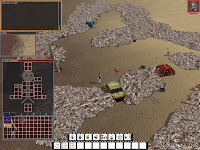The Content Creation Phase of the Liberated Pixel Cup is over!
You might want to ignore this blog post and read their announcement instead.
Here is a partial preview of the results:
18 minute preview of all .flac files (two .ogg files excluded):
Download from box.net [mp3, 17M or ogg, 13M]
Get all files from opengameart.org/lpc-art-entries in .zip format:
Download from mediafire.com [link, 185M], box.net [part1, 96M | part2, 90M]
Now it is time for the Coding Phase of the Liberated Pixel Cup!
Rules:
Judging Criteria:
Good luck and great Success!
You might want to ignore this blog post and read their announcement instead.
Here is a partial preview of the results:
18 minute preview of all .flac files (two .ogg files excluded):
Download from box.net [mp3, 17M or ogg, 13M]
Get all files from opengameart.org/lpc-art-entries in .zip format:
Download from mediafire.com [link, 185M], box.net [part1, 96M | part2, 90M]
Now it is time for the Coding Phase of the Liberated Pixel Cup!
Rules:
- Start: July 1st, 12:01 AM Pacific Daylight Time
- End: July 31st, 11:59PM Pacific Daylight Time
- License: Code entries must be free and open source, and must be available under the GNU GPL 3.0. You may optionally release the code under any additional license(s) that you choose.
- Source code: You must provide the complete source code for your entry. Any code you have written for your game prior to the beginning of the contest must be made available at the beginning of the contest.
- Platform: Your code must be able to be compiled and run on a 100% free-as-in-freedom platform. It may not make use of any proprietary libraries or VMs. Just to be clear, we cannot accept games that will ONLY run on one of the following: Flash, Silverlight, XNA, Unity, Windows, MacOS , Mac OS X, iOS, proprietary JVMs, or similar. It is perfectly acceptable if your game runs on any of these platforms, but it must also work on an open platform (we strongly recommend making sure that your program run on modern flavors of GNU/Linux, as all of the judges will have access to it).
- Framework: You may use an existing engine or framework, or build your game from scratch.
Judging Criteria:
- Consistency of style: Your game should primarily make use of the art either provided for or entered into the contest. You may add additional art if needed, but all original art included in the game must be available under the CC-BY-SA 3.0 License and the GNU GPL 3.0 (existing art from other sources may be under any free-as-in-freedom license).
- Ease of use: Your game should be easy to compile and run. You won't be disqualified automatically if a judge is unable to run your game, but it will count against you. You are advised to avoid having large numbers of obscure dependencies or requiring bleeding edge (unstable) libraries.
- Creativity: Games will be judged on how creatively they use the artwork.
- Judge's opinion: How much the judges like your game.
Good luck and great Success!
































